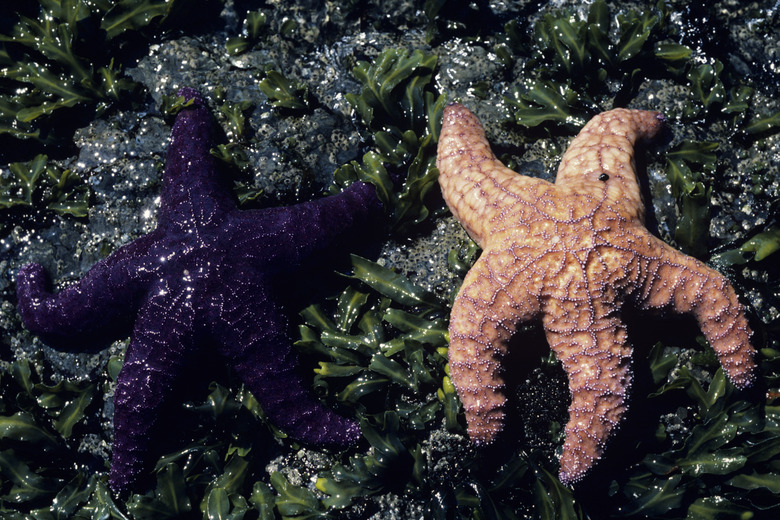The Energy Cycle In An Ecosystem
The word ecosystem refers to the all of the living species as well as non-living elements in a particular environmental area. For instance, a lake, swamp, coral reef, forest, or a prairie would each be considered an ecosystem. Ecosystems can vary greatly in size and individual characteristics — for instance, the ecosystem of a puddle differs greatly from that of a swath of tundra.
Despite these disparities, all ecosystems function similarly in the way in which energy flows into, through, and out of them through the energy cycle.
Overall Structure
Overall Structure
Energy is transferred into and out of ecosystems via a web of complex interactions. Energy enters an ecosystem from external sources and moves throughout its components. For instance, energy from the sun flows through plants, microorganisms, and animals. Energy cycles in an ecosystem end with decomposition, and then the process begins anew.
Essentially, the flow of energy through ecosystems can be explained by who eats what. Keep in mind, however, that energy transfer isn't perfectly efficient; much of it dissipates as heat at various phases in the cycle.
The Role of Autotrophs
The Role of Autotrophs
Autotrophs are the producers in an ecosystem. The word "autotroph" means self-feeder. Autotrophs mainly consist of plants, algae, and some bacteria. Oftentimes this occurs via the process of photosynthesis, in which producers convert light energy from sunlight, along with water and carbon dioxide, into carbohydrates. The carbohydrates combine with other molecules to form a plant's basic structural material.
However, photosynthesis isn't the only way that autotrophs convert energy; some autotrophs produce carbohydrates by using chemical or thermal energy instead of solar energy.
The Role of Heterotrophs
The Role of Heterotrophs
The term "heterotroph" refers to the consumer species in an ecosystem. Heterotrophs can be classified into different types depending on their energy source — that is, what they eat. Consumers may eat exclusively plants, animals, fungi, bacteria, or an assortment of organisms.
Animals who obtain their energy solely from plants are known as herbivores, or primary consumers, while animals who obtain their energy mainly by eating other animals are called carnivores, or secondary/tertiary consumers. Animals that get their energy from both plant and animal sources are called omnivores.
Energy flows through heterotrophs regardless of their type, as they all produce waste and eventually die.
The Decomposition Process
The Decomposition Process
The energy cycle in an ecosystem ends and begins anew with the decomposition process. Certain bacteria, worms, insects, fungi, and even mold act as decomposers. They convert organic matter — mainly the waste or remains of autotrophs and heterotrophs — into inorganic matter, which the autotrophs eventually use.
Matter, though, differs from energy — in the process of doing their job, decomposers produce heat energy. This is why compost piles are warm. All of the energy that cycled through the ecosystem leaves it in this way.
Example of the Energy Cycle: Forest Ecosystem
Example of the Energy Cycle: Forest Ecosystem
Let's look at an example that illustrates this cycle by looking at a forest ecosystem.
Primary producers (autotrophs) such as trees, grasses, and other plants use photosynthesis to turn solar energy into chemical energy, namely glucose.
This energy they create via photosynthesis is then transferred to the primary consumers (heterotrophs) who eat those plants. In a forest, this could be deer, mice, insects, squirrels, chipmunks, etc. From there, secondary and tertiary consumers will eat those primary consumers and incorporate their energy into themselves. In a forest, this could include foxes, small birds, birds of prey, wolves, bears, etc.
When any of these organisms dies, decomposers will break them down and use that energy for themselves. In a forest, this includes fungi, bacteria, certain insects, etc.
At each step of this cycle, some energy is lost through heat. The cycle begins again with the conversion of solar energy into chemical energy with producers.
References
- Ohio State University: Ecosystems and Ecosystem Management, Joe Bonnell
- The Franklin Institute: Ecosystems, Biomes, and Habitats
- Discovery.com: What Comprises an Ecosystem
- College of DuPage: Energy in an Ecosystem
- Energy Flow in Ecosystems, Energy Capture and Use
- University of Michigan: The Concept of the Ecosystem
Cite This Article
MLA
Harris, Amy. "The Energy Cycle In An Ecosystem" sciencing.com, https://www.sciencing.com/energy-cycle-ecosystem-8881/. 31 July 2019.
APA
Harris, Amy. (2019, July 31). The Energy Cycle In An Ecosystem. sciencing.com. Retrieved from https://www.sciencing.com/energy-cycle-ecosystem-8881/
Chicago
Harris, Amy. The Energy Cycle In An Ecosystem last modified August 30, 2022. https://www.sciencing.com/energy-cycle-ecosystem-8881/
